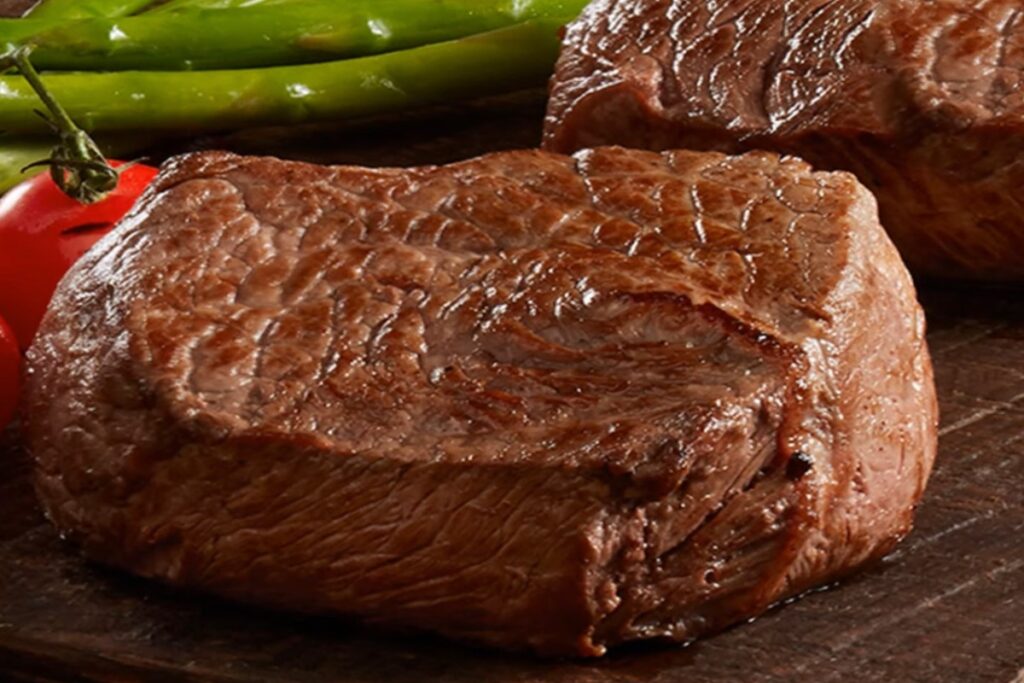If you’re going to buy a costly steak you should know which one to get. We’ll show you how to tell the difference between a New York strip and a Sirloin.
Knowing which steak to choose from a menu says a lot. If you fancy a steak in a high-end restaurant then you’ll want to ensure you make the right decision. In a steakhouse that list is going to be extensive. All those steaks are fast-cooking pieces of delicious meat yet the cuts and the areas of the cow they are from differ.
You will want to ensure you pick the cut of steak that hits the spot. A New York strip and a Sirloin are just two of those cuts that should be on the list. They’re both steaks but they both have their own characteristics.
The differences between a New York strip and a Sirloin aren’t huge. The two cuts are similar yet distinct. Knowing how they differ will help you decide which one to choose. We will explain what those differences are and let you decide which you want to choose.

The Main Difference
Some cuts are named due to which specific part of the cow they originate from. This is the main difference between a New York strip and Sirloin. Sirloin refers to a particular part of the cow, namely from the subprimal posterior running to the short loin.
A New York strip is a particular cut of sirloin. That’s straightforward, Sirloin refers to the area of the cow whereas a New York strip refers to the specific cut. Here’s another thing to remember; New York strips will always be sirloin. However, a sirloin will not always be a New York strip.
New York Strip
Also known as ‘strip steak’, the New York strip forms part of the short loin primal cut. This is behind the ribs and before the rump. As a specific cut, it’s worth leaving alone on its own merits. The natural marbling throughout the cut means it can be enjoyed on its own.
Those delectable white streaks of fat are mixed in with the meat to create a delicious flavor. More marbling means more flavor, simple. That’s one of the best signs to look out for in an excellent steak.
Due to the cut itself, you’re likely not to be chopping off large pieces of gristle either. No need for sauces or marinades, leave it alone with some accompaniments and enjoy.
Sirloin
There are over several different types of sirloin steak. That makes it a really versatile option for cooking and it can be used in all sorts of dishes. Use it in tacos, as a salad topping, in a sandwich, or to grind into hamburgers.
Sirloin is a great cut to include on a kebab to stand out amongst grilled vegetables. If you want a steak simply to experiment with then sirloin is a great option. Throw it into a stir-fry if you fancy something to chew on with your noodles.

Cost
You can take some risks with a sirloin because it’s a cheaper cut. It will likely be cheaper and easier to find on the supermarket shelves. You can take it home with you and know you’ve got a good cut of steak that you can try out new recipes on.
Due to that versatility, sirloin is arguably a more value-for-money steak than a New York strip. If you wanted to simply cook it on its own, it may be cheaper than other cuts but less forgiving when overcooked.
If you’re wanting to splash out in a steakhouse then a New York strip is likely to be towards the pricier end. That’s with good reason too. New York strips are known for their tasty flavor and tenderness. The marbling also gives it a juicier texture meaning it’ll be easier to cut.
Good to know if you don’t want to be caught chewing on your steak in a restaurant. While a New York strip will be more expensive than a sirloin it shouldn’t be the costliest on the menu. You should expect a ribeye steak or filet mignon to have bigger price tags. That makes the New York strip a great steak for a treat.
Appearance
The most important factor in a New York strip is that it has a lot of natural marbling. These are those white streaks of fat mixed throughout the cut. In comparison, sirloins tend to be redder and leaner. The New York strip also has a tight texture with a pronounced grain.
You can also expect a thick cap of fat down one side of a New York strip and it’ll usually be boneless.
Tenderness
The sirloin is located closer to the rump so lacks the tenderness of a New York strip. As the sirloin comes from a harder working muscle it tends to be tougher too.
Sirloin does benefit from being a leaner cut yet that comes with less marbling. Factor this into cooking as it should be fine for rapid meals such as stir-fries. Don’t cook it for too long though as it can be dry and tough past medium.

Flavor
A New York strip includes more delicious fat and has a stronger flavor than a sirloin. The marbling of a New York strip arguably triumphs here.
A New York strip tends to have a stronger, more ‘beefy’ flavor so you could simply leave it at that too. If you were to do anything with it, simply concentrate on the accompaniments. Maybe some delicious veggies such as seared asparagus or a leafy salad.
As they’re leaner, sirloins lack flavor of their own from the fat. However, they do take seasonings and marinades really well which is worth considering. As a sirloin cut is naturally lower in fat it’s a good option to have for health-conscious guests. That may not be so useful in a restaurant yet if you’re cooking at home you can experiment.
Final Thoughts
There are several differences between a New York strip and a sirloin. A lot of decision-making will be down to cost and that’s the main factor here. If you’re wanting a steak to practice with and cook at home then choose a sirloin.
Certainly, it’s still flavorful yet takes on flavor well too. It can also be cooked in high-heat dishes such as stir-fries or kebabs. Its versatility makes it one of the more value-for-money cuts of steak available.
The New York strip is more expensive due to its juicy texture and extensive flecked marbling. Should you find yourself in a steakhouse wondering what to splurge on then a New York strip is a great option.
- Is Blue Steak Safe To Eat? - May 7, 2022
- How To Tell If Your Bratwurst Sausage Is Cooked - May 7, 2022
- The Internal Temperature For Tri Tip When Done - May 7, 2022








